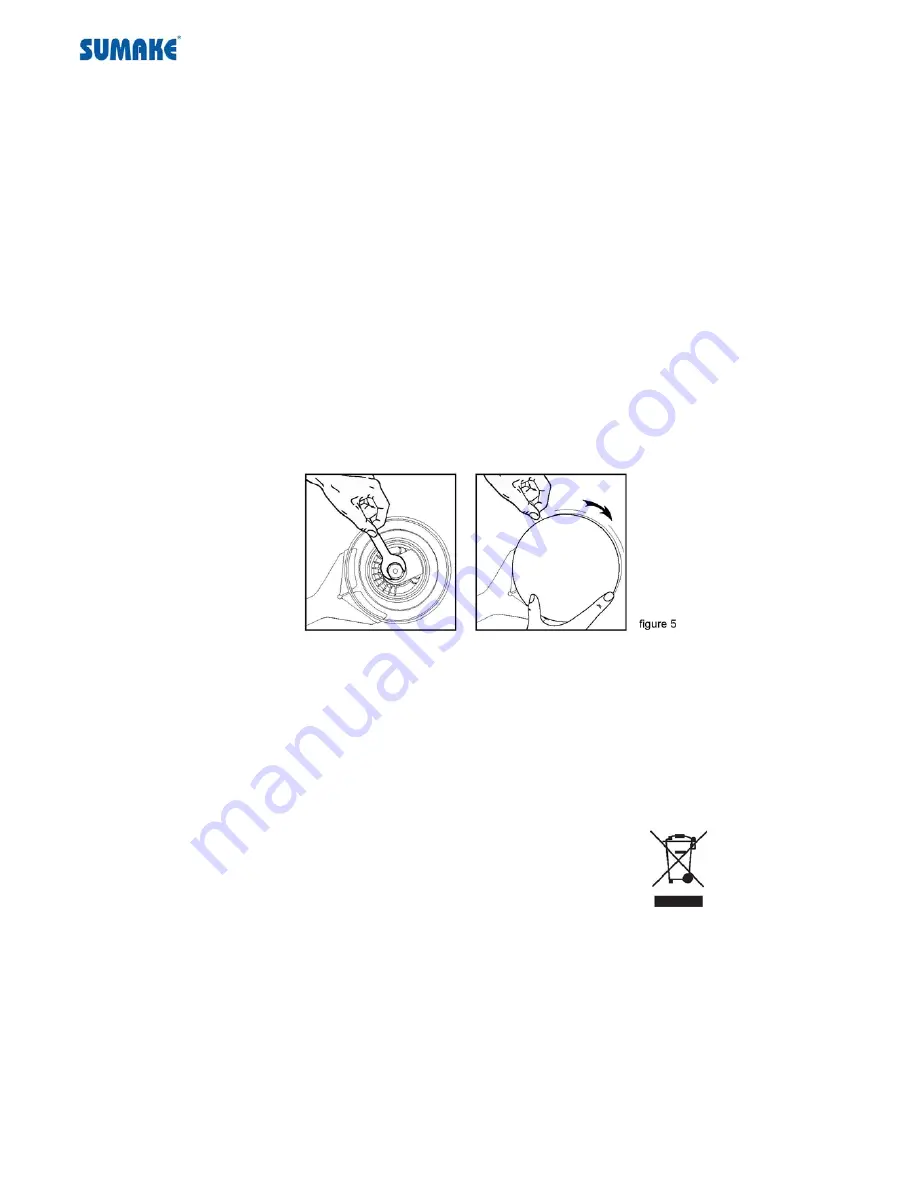
5
Downforce Overload System
The Sander has the ability to monitor and maintain the preset Maximum Speed as user downforce increases or decreases
during use. During periods of overly high user downforce, the Sander will flash the LED on the back of the tool from Green
to Red and cause the motor to slow slightly as a warning to the user.Continuous downforce should be no greater than
approximately 5Kg (11 lb.). If the user continues with overly high downforce, the Sander will change the LED to solid Red
and stop. To restart the sander immediately, released the lever and pressed down again and continue sanding. Repeated
overloading will result in frequent motor stops and increased tool temperature.
Temperature Overheat System
The Sander has the ability to monitor temperature of the internal electronic systems, and can shut the tool down when
temperature reach damaging levels. During periods that result in high internal temperature, the Sander will shut down if the
temperature reaches a damaging level. The Sander will not be able to be restarted until the internal temperature cools to a
level safe for the electronic systems. Cooling time depends on local conditions. An initial waiting period of 5 minutes is
recommended. Repeated overheating will result in longer cool down times.
ATTACHING DISC PADS
1.
Secure the Spindle with the flat wrench provided with the tool, and screw the Disc pad on. Tighten to firm
hand-tightness. Do not over tighten.
2.
To remove the Disc Pad, insert the flat wrench between the Disc Pad and shroud. Secure the Spindle with the flat
wrench and unscrew the Disc pad. - see figure 5.
CLEANING
1.
Periodically blow out all air passages and area above Disk Pad and under shroud with dry compressed air. All plastic
parts should be cleaned with a soft damp cloth. NEVER use solvents to clean plastic parts.
2.
Wear safety glasses while using compressed air.
HEALTH AND SAFETY INFORMATION
RoHS Compliant
This product and the associated component parts are “RoHs Compliant” and do not contain any of the sub stances in
excess of the maximum concentration values in EU Directive 2011/65/EU, as amended by Commission Decision
2005/618/EC and other amendments issued as of the date code marked on the product.
Waste Electrical & Electronic Equipment (WEEE) Compliant
Do not dispose of electrical appliances as unsorted municipal waste, use separate collection facilities.
Contact your local government for information regarding the collection systems available.
If electrical appliances are disposed of in landfills or dumps, hazardous substances can leak into the groundwater and
get into the food chain, damaging your health and well-being.
When replacing old appliances with new ones, the retailer is legally obligated to take back your old appliance for
disposal at least for free of charge

























